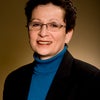Mattel recently announced that Barbie would now come in three body types. The doll that comes in different skin tones will now come in different body types as well. The doll that millions of girls have played with for over 50 years was invented by a woman. Women throughout U.S. history have made significant contributions to both children's education and play. Match the woman with her accomplishment:
____ 1. Developed Barbie in 1959 after watching her daughter play with adult paper dolls, changing their outfits and dreaming up various situations for them.
____ 2. She co-wrote what today we call the "Dick and Jane" series of books for children.
____ 3. She developed rods, colored blocks of varying lengths (named after her) to concretely teach children how to add, subtract, multiply, and divide.
____ 4. Founded the Children's Television Workshop whose first television program was Sesame Street.
____ 5. Established the first English-language kindergarten in Boston in 1860.
A. Elizabeth Peabody
B. Catherine Stern
C. May Arbuthnot
D. Ruth Handler
E. Joan Ganz Cooney
Elizabeth Peabody wanted to learn. Precluded from attending high school or college because she was female, she taught herself and became a teacher. In the 1820s and 1830s, the methods she used were new and related to all areas of a student's development. In 1860, she opened the first English-language kindergarten in the U.S. in Boston and spent the next thirty years advocating for early childhood education. In her kindergartens, children were taught to read and write as well as to garden, tend animals and interact with nature. By 1880, only twenty years after her kindergarten was established, there were more than 400 kindergartens in 30 states and kindergartener training schools throughout the country.
Catherine Stern grew up and was educated in Germany, earning her Ph.D. in mathematics and physics. Significantly interested in childhood education, she learned the Montessori teaching method and held a preschool in her home. She later opened a Montessori kindergarten that later expanded to include after-school activities for children and a school to train teachers. After she and her family immigrated to the U.S. to avoid persecution by the Germans prior to the U.S. entry into World War I, she worked on improving the mathematics techniques she had developed in Germany. Her "Stern rods" were colored lengths of blocks that fit into slots in board or frames that enabled children to concretely learn to add, subtract, multiply and divide. Stern also developed tools to aid in reading and writing.
May Arbuthnot was one of the two developers of the Curriculum Foundation Readers, what we know today as the "Dick and Jane" series. Educated at the University of Chicago and Columbia University, Arbuthnot wrote other books as well that are regarded as significant contributions to children's literature including Children and Books (1947), The Arbuthnot Anthology of Children's Literature and Children's Books Too Good to Miss. As an educator, editor, writer and critic, Arbuthnot devoted her professional career to bringing about an awareness of the importance of children's literature.
Ruth Handler, whose children were named Barbara and Ken, started the Mattel toy company with her husband Elliot. Handler created the Barbie doll after watching her daughter's play patterns. Earlier, Barbara had played with babydolls but as she got older, she played instead with adult paper dolls, changing their outfits and dreaming up different situations in which the dolls would find themselves. Handler said "I used to watch that over and over and think: if only we could take this play pattern and three-dimensionalize it, we would have something special." And, something special they had. Barbie was introduced at the 1959 Toy Fair in New York City and is now known the world over.
Joan Ganz Cooney founded the Children's Television Workshop (CTW). A documentary producer for television, Cooney believed that television could be used as a teaching medium. With this conviction, she founded CTW in 1968. Its first television program was Sesame Street. The show first aired in 1969 and has been on television continuously since that time (now over 40 years). Cooney also led in the production of The Electric Company which began airing in 1971. The recipient of multiple awards including an Emmy Award for Lifetime Achievement and the Presidential Medal of Freedom, Cooney has been inducted into the National Women's Hall of Fame.
Learn about more she-roes and celebrate amazing women. All of these women who contributed to children's education and play are among the more than 850 women profiled in the book Her Story: A Timeline of the Women Who Changed America. We recognize and benefit from their significant accomplishments.
(Answers 1-D, 2-C, 3-B, 4-E, 5-A )
